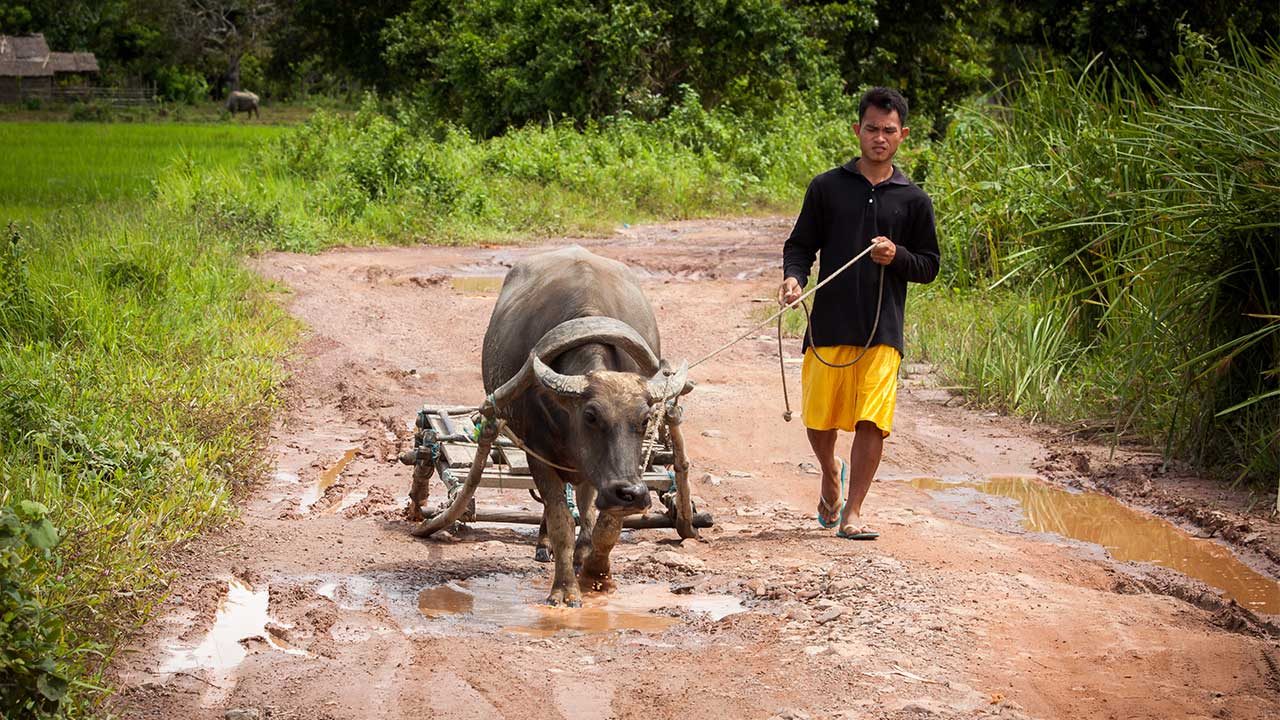SUMMARY
This is AI generated summarization, which may have errors. For context, always refer to the full article.

Two days after Christmas day, on December 27, 69-year old Zosima Reduble of Roxas town in Palawan received P5,000 in financial assistance through her cash card issued by the Development Bank of the Philippines and remittance giant USSC, a Banko Sentral-licensed e-money issuer. She was among the 17 farmers within their village in Barangay Antonino issued with a card to receive cash aid.
Reduble is among the two million smallholder rice farmers in the country who began receiving P5,000 each in cash assistance from the Rice Farmers Financial Assistance Program, an unconditional cash grant for farmers cultivating below two hectares of rice field.
This is pursuant to Republic Act No. 11598 or the Cash Assistance to Filipino Farmers Act of 2021. The program is funded through the excess tariff collection from rice importations in 2022, totaling P12.7 billion.
The cash aid is also intended to help farmers cope with the increasing cost of production and sustain their productivity even in the face of challenges, such as a drought cited by the Department of Science and Technology as potentially affecting 63 provinces in the country by April 2024.
Since 2021, the Department of Agriculture started the distribution of farmers’ Intervention Monitoring Card (IMC) that serves as both an identification and cash card, specifically for those farmers and fisherfolk registered in the DA’s Registry System for Basic Sectors in Agriculture, or RSBSA.
Reduble has been farming her entire life in Roxas town, cultivating palay (rice), coconut, cashews, vegetables, bananas, and other crops. Her parents Enrique – who migrated from Masbate to Palawan – and Vicenta – who reached mainland Palawan from an island town of Cuyo – were full-time farmers who cultivated more than eight hectares of farmland since the early 1950s. Now, she inherited her parents’ homestead.
She considered the cash aid as manna from heaven and was hopeful they would still receive cash aid at least twice annually to help them cope with the rising cost of pesticides, fertilizers, and other farm inputs.
Farmers’ struggles
She estimated that it will cost them around P10,000 to P15,000 – including wages for farm workers – during the entire cropping period for their rice field of less than two hectares to produce rice. For a full-time farmer like her, who depends only on her farm’s produce, the estimated amount is considered large.
A 1-liter bottle of pesticides to eliminate black bugs from their field costs P800, and could only last around 12 days, since they spray it every three days to prevent infestation and worse losses if the entire field is affected and not acted upon.
“Kailangan bawat tatlong araw mo siyang spray-han, kung hindi ay dadami na naman ang mga black bug sa palayan mo.” (You need to spray the plants every three days, or else black bug will infiltrate your entire ricefield.)
What she considered as disastrous was when they yielded only 24 sacks of palay in one cropping last year. For these, she sold her palay to a local trader at P600 per sack or a total of P14,400, for which she has a deficit of P600. She said that unproductive or old stock rice seed was the reason for the very low yield.
Luckily on the next cropping, they harvested a total of 60 sacks, from which they earned P36,000. But still they struggled with the challenges that smallholder rice farmers faced. Among these was the inability to trade their rice to bigger traders offering more competitive buying prices.
Further, due to their village’s inaccessibility to vehicles like trucks, they need first to find a carabao with a cart – locally known as a carroza – to haul their palay from their rice field to the local rice trader in their barangay. A carroza operator is paid P50 for every sack of palay hauled.
Reduble said that some years ago, they received fertilizer from the municipal government, which is a big help for farmers, considering these costs P3,300 if bought from agricultural stores. The municipal agriculture office also distributed sacks with 20 kilos of rice seeds, of which she received two sacks. These, however, did not produce much rice because it was already old stock.
“Sana itong cash assistance na ito, magtuloy-tuloy sana kasi para rin masuportahan ang mga ginagastos namin sa pagtatanim ng palay para sa susunod na cropping. Kahit dalawang beses sa loob ng isang taon, malaking tulong na yun,” Reduble said.
(I hope this cash assistance will continue to support us in shouldering the cost of cultivating palay for the next cropping. I would be happy if we could receive it twice in a year, as it would be a big help already.)
Challenges and wishes
Their hinterland village is 41 kilometers from the town proper of Roxas, and mechanized farm equipment such as farm tractors, rice harvesters, and the like have not reached their place yet due to unfavorable terrain and poor road conditions.
But Reduble’s youngest son, 32-year-old Darrel Vicera, preferred not to take advantage of farm equipment rentals because for him, it appeared more costly to rent these DA-provided mechanized farm equipment from farmers’ cooperatives. He said the rent was pricey, and was the reason why he still preferred hiring farm laborers.
“Ang mga makina tulad ng traktora, harvester wala pa dito kasi mahirap sya dalhin sa kabundukan. Lalo na mga kalsada dito malalalim mga putik. Pero kahit pa man may ganyan, hindi rin kami mag-avail kasi medyo mahal ang sinisingil ng mga asosasyon (farmers’ association and cooperatives), ang bayad may pera, may palay din. Kung masira, mahirap din, kasi sasagutin at gagastusan ng nag renta,”
(Mechanized farm equipment like tractors and harvesters havenot reached our place yet, because it is difficult to bring them to hinterland villages. Also, the roads here are deep and muddy. But even if there were mechanized equipment here, I would still prefer not to avail of them because farmers associations are charging high rental fees, and sometimes farmers pay cash, while other pay in palay. If the equipment is damaged, it’s also hard, as the one who rented the equipment will shoulder the repair costs.)
Amy Revillas, a 39-year old rice farmer, said unfavorable conditions for rice farmers, especially for smallholder farmers, forced them to stop planting palay
Her New Year’s wish is for both national and local governments to reach out and visit smallholder rice farmers like them in order to understand their plight. She hopes that with them reaching out, more interventions will benefit them, as the government would know and understand what they are going through.
For 50-year old rice farmer Renato Caabay, his New Year’s wish for 2024 is the fulfilment of the long-promised road paving project from Barangay Tumarbong going to their barangay in Antonino – a distance of 14 kilometers. Since 2018, the municipal government had said the Department of Agriculture, through the Philippine Rural Development Project, will pave the road with concrete, but until now this is apparently unfulfilled.
For him, paving the road with concrete will enable smallholder rice farmers like them to sell their rice to traders offering more attractive and reasonable prices as compared to local-based traders whose buying prices are comparatively lower.
Smallholder rice farmers differ from large-scale rice farmers who are earning more, own mechanized equipment, and who own trucks to haul their wares to bigger rice traders offering more competitive prices. These smallholder farmers, however, have no other choice but to content themselves to selling their palay to the only rice trader in their own barangay, rather than shouldering costs to have their palay hauled to the town proper, a cost they could scarcely afford. – Rappler.com
Gerardo C. Reyes Jr. is an Aries Rufo Journalism fellow.
Add a comment
How does this make you feel?





There are no comments yet. Add your comment to start the conversation.